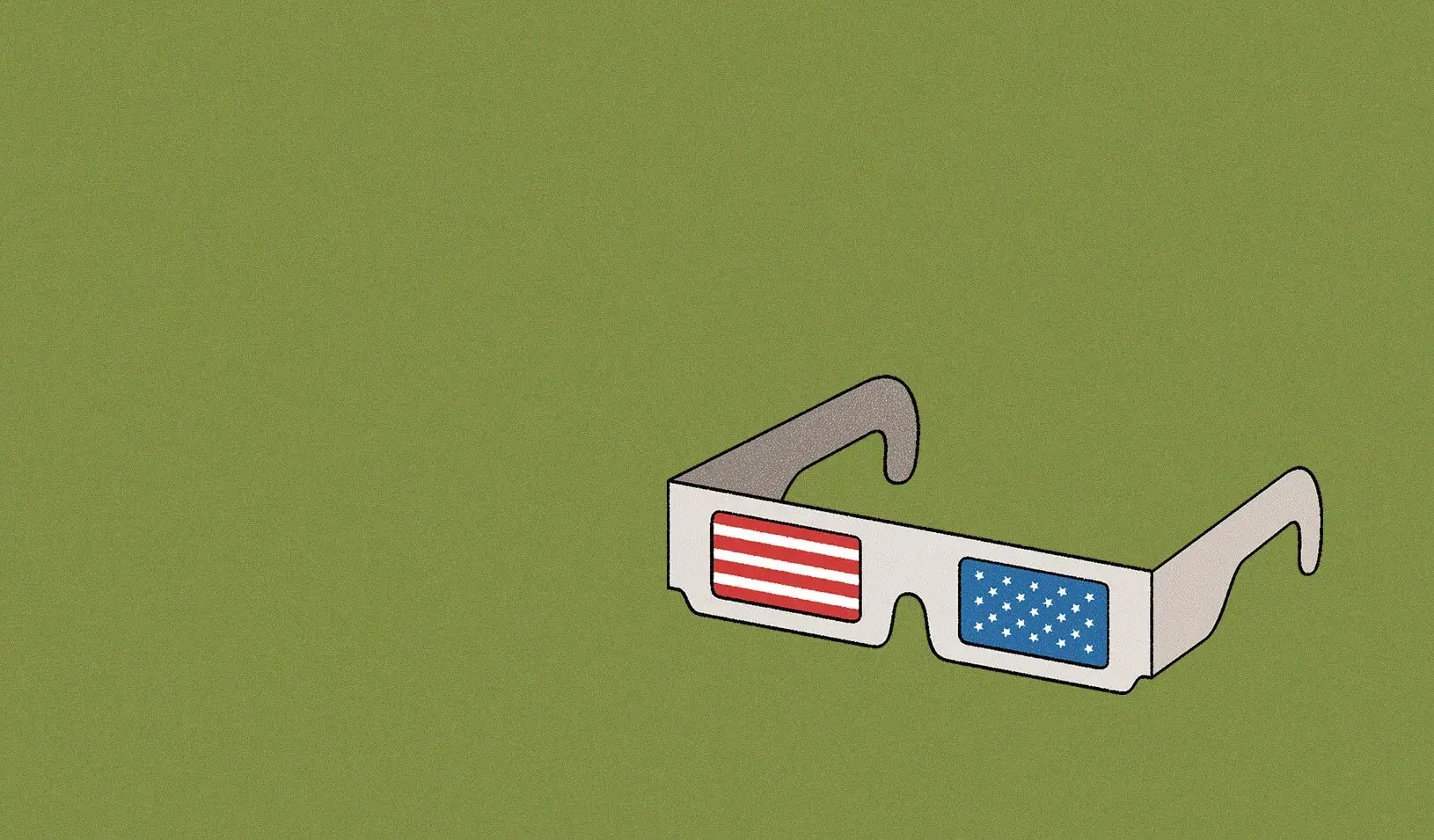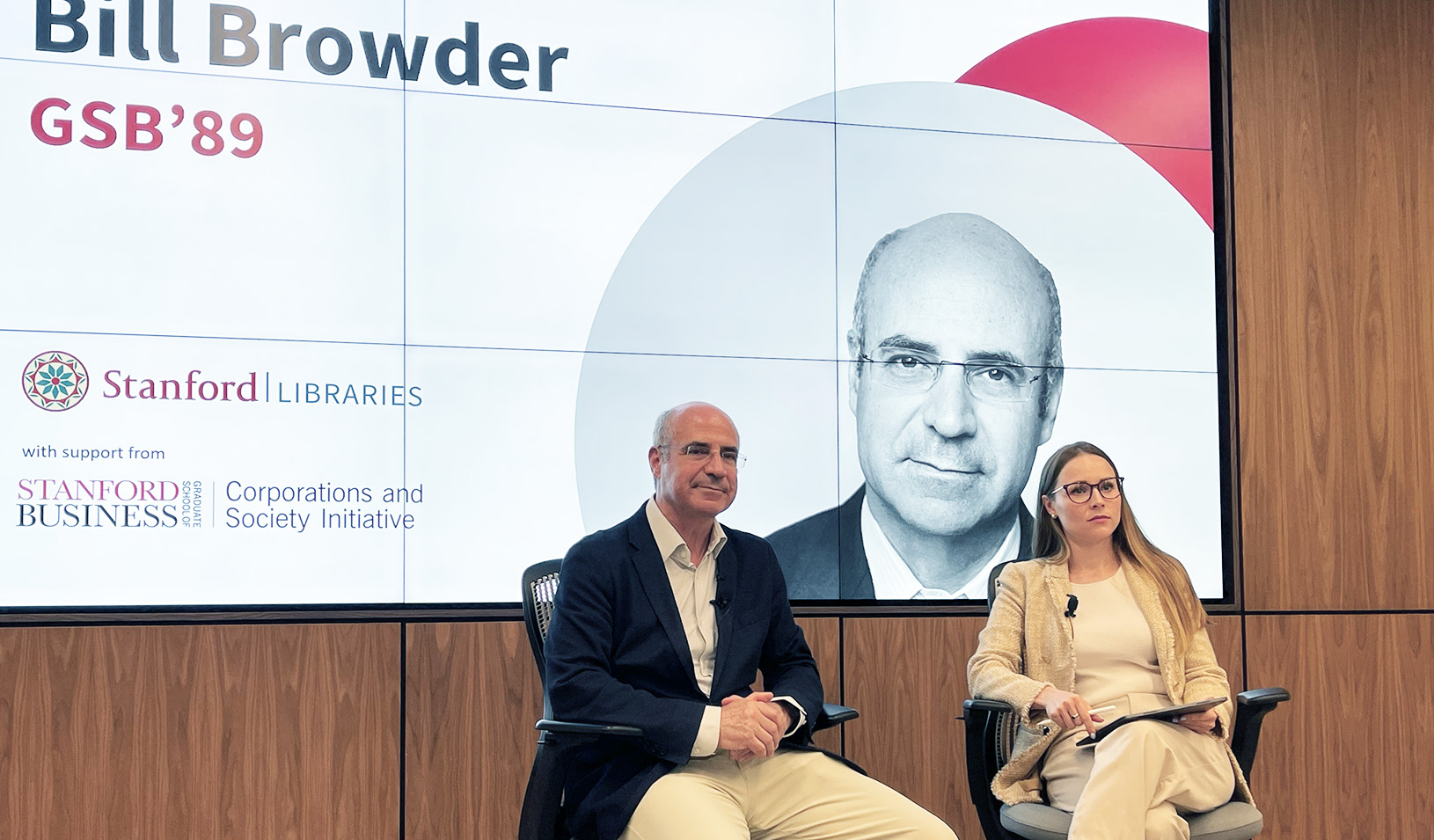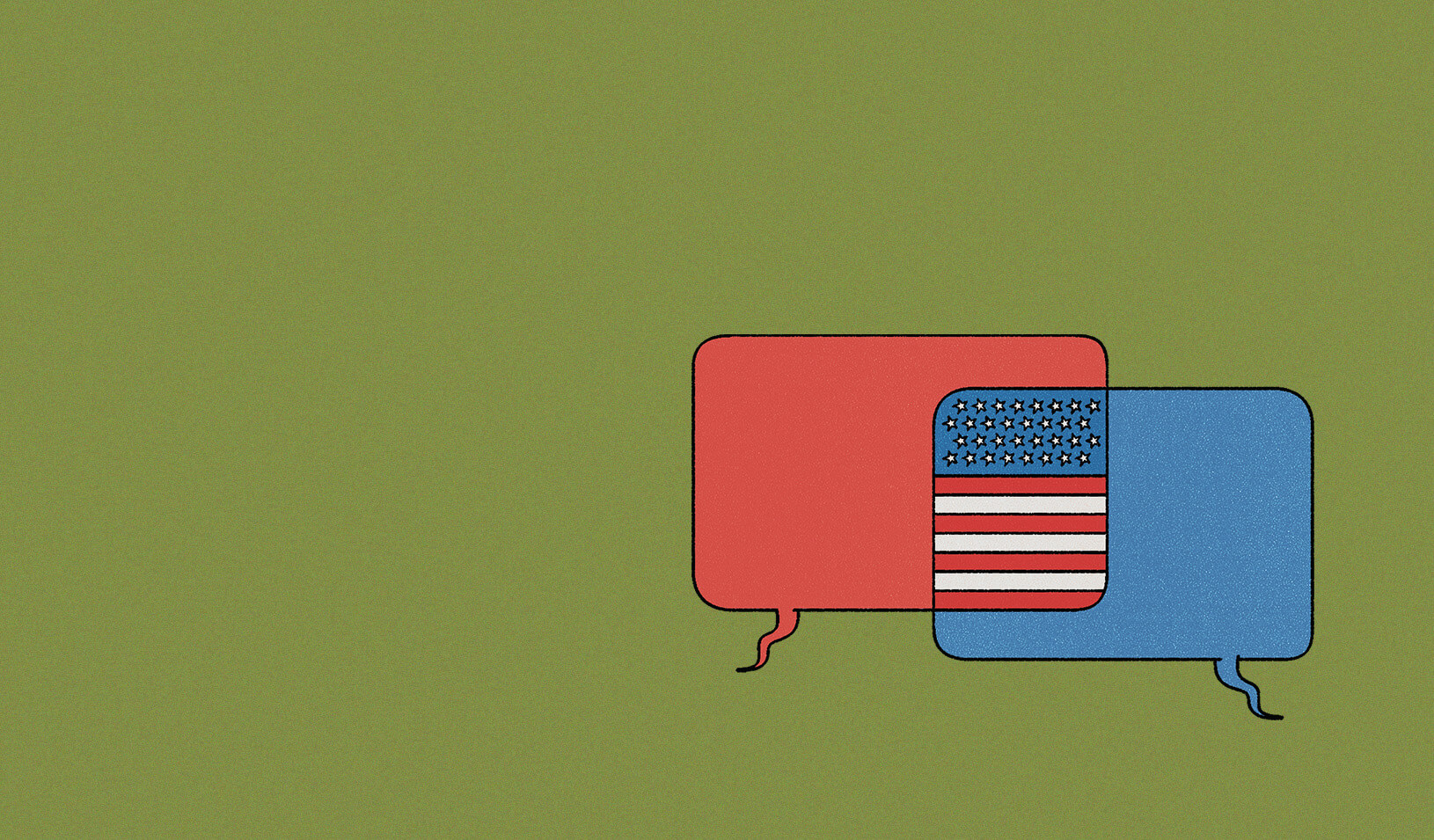
Illustrations by Álvaro Bernis
What drives political polarization and what are some constructive ways to move beyond it? Robb Willer, Michele Gelfand, Ken Shotts, and Condoleezza Rice offer some ideas.
Rethink Your Assumptions

Robb Willer is a professor of organizational behavior (by courtesy) at Stanford GSB and the director of the Stanford Polarization and Social Change Lab.
What are some of the main forms of polarization that you’re studying?
Robb Willer: The two aspects of polarization that we study in the lab that I’m most interested in are attitudinal polarization and affective polarization. Attitudinal polarization describes Americans, especially partisans, disagreeing on issues and policies. The other major form of polarization is affective polarization. This refers to animosity between Democrats and Republicans and also support for political violence and dehumanization.
Pulling Back From Polarization
In this Stanford Business three-part article, researchers, policy experts, and politicians discuss ways to establish common ground, work together, and strengthen democracy.
Our focus there has been on correcting misperceptions of the other side’s intentions and perceptions. You can reduce Democrats’ and Republicans’ support for political violence almost 50% by just giving them basic data on how much the other party actually supports political violence. If we can fix those misperceptions, make them more accurate, then we can reduce people’s actual support for political violence, which is lower than people think, among both Democrats and Republicans.
You have also studied “moral reframing” as a way of reaching out to people on the other side. How does it help people stop talking past each other?
Willer: The core idea of moral reframing is that you can increase support for an issue position or a political candidate by articulating your case in terms of the moral values of people who do not yet support the issue or candidate. It may sound intuitive to say, “Connect with the moral values of your audience if you want to be persuasive,” but it’s definitely not what people spontaneously do. Even when they’re trying to persuade somebody of a different ideology or party, people tend to use their own moral values and moral rationales in making the case for their positions.
You have a recent paper on how members of Congress use Twitter. What did you find?
Willer: We estimated how toxic the tweets of Congresspeople have been from 2009 to 2019, finding a 23% increase in the toxicity of their tweets. When we try to interpret what’s going on there, one possibility we considered is that maybe politicians’ rhetoric in general is getting more toxic. But when we look in other spaces besides Twitter, we don’t really find evidence for that. Our best inference on that is that it seems Congresspeople are doing what gets them likes and retweets. But you have this weird paradox where the more toxic a congressional tweet is, the more likes it gets, but the less liked it is by the average person that saw it.
The takeaway, at least from a platform perspective, is that social media platforms may create environments where they reinforce certain behaviors that we think of as characteristic of affective polarization and toxic political communication because they incentivize certain behaviors that actually aren’t really that popular.
What role do leaders have to play in making sure depolarization efforts are successful?
Willer: I think that leaders can do a lot. For example, we find that if you show Republicans examples of prominent Republican politicians endorsing the results of the 2020 election, they have more faith in the results of the 2020 election and in elections in general. We did a similar study where we were trying to see if we could find something that would increase Republicans’ interest in getting vaccinated [against COVID]. There as well, we found if you just amplify those voices within the party that do support vaccination, that was effective for increasing vaccination intentions.
Looking specifically at business leaders — what role can they play in helping reduce partisanship?
Willer: The biggest thing I would say is to not give money to politicians who are worsening political conflict in serious ways. There are politicians who are saying that American elections are not trustworthy. There’s no evidence for that. Don’t help those people get elected.
If you could give readers one takeaway they can use to think more constructively about their own role in this and how they can combat polarization, what would that be?
Willer: It would be to keep in mind that research indicates that your rival partisans, whether they’re Democrats or Republicans, probably have much less extreme views on average than you think they do. I think realizing that those who disagree with us are not as extreme in many respects as we often assume they are can also be helpful for the way we approach political engagement. It can help us to not give up on persuasion, to keep trying to build broader political coalitions through meaningful and respectful conversation.
Reach Across Divides

Michele Gelfand is a professor of organizational behavior at Stanford GSB. Ken Shotts, PhD ’99, is a professor of political economy at Stanford GSB.
What has your research revealed that might help us understand and overcome divisions between us?
Michele Gelfand: We tend to be in our own echo chambers and that can lead to having extreme stereotypes of people, but once we really get a window into their daily lives, what they are doing 24/7, it can make us much less polarized. One example comes from some work we published recently where we had Americans and Pakistanis tell us about their stereotypes of each other. Americans think of Pakistanis as being extremely “tight” — in mosques all the time, living in a very constrained context. They don’t think about them playing sports, reading poetry, or listening to music. And Pakistanis, when they look at American culture, some of them see us as extremely “loose” — as, you know, drinking beer for breakfast, walking around half-naked.
We developed an intervention called the daily diary technique where we randomly assigned people in each country to read each other’s diaries for a week. We found that over time this reduced cultural distance compared to when they read diaries from their compatriots. Pakistanis started to see Americans as more moral. And, likewise, Americans saw Pakistanis as warmer, and having more freedom than they would’ve expected.
If we can scale this up and help people to see the similarities versus the differences, then maybe we can puncture some of these stereotypes. We are doing this now with Republicans and Democrats.
Ken, in your book, Leading with Values, you talk about the importance of understanding how people’s values affect their beliefs and behavior. How does knowing what motivates people help us come together?
Ken Shotts: I think we all have something in our morality that is common. That isn’t to say we agree on everything, but there are aspects of this that are interwoven between us. We all care about family and people who are close to us. There are certain things that are okay to do and there are certain things that are defiling or degrading. We might disagree about what those things are, we may not have the same reaction when we experience them, but there’s something similar going on there. Our belief system is undergirded by our morality.
Media, and social media in particular, often amplify an “us versus them” mindset. Is there anything to be done about that?
Shotts: When I was growing up, there were three channels on television and they were all basically identical to each other. With the proliferation of media, it’s easier for people to seek out their own facts and their own tribe, and to confirm their own point of view. It’s a dangerous thing when we can have our own facts that come with our own tribal emotions embedded in them.

Gelfand: Social media is a hot mess. We don’t have a social presence online, so we do all sorts of weird things that we don’t feel accountable for. It makes people really disinhibited. One of the most important things we could do is tighten up social media. Even if it was a simple matter like signing a pledge to behave civilly; that might help set these norms early on with children, for example.
I have a dream that along with math and science and other subjects in high schools, we could have a conflict negotiation and emotional intelligence class for kids. They’re the future leaders of the country and we don’t teach that stuff.
What do you see as the most critical problem related to polarization, and what would it take to solve it?
Shotts: The thing that I am most worried about is not supporting institutions in this country. It’s one thing to have disagreements about tax rates or climate change policies, but what really worries me is the lack of buy-in about democracy and representative government and rule of law. Belief in those institutions is an issue of first-order importance.
And I know it’s easy to say, “Oh, there are problems with both sides of the political spectrum on this,” but I’m just going to be blunt: I think this is asymmetric. Although there are many people in the Republican Party who are appalled by [efforts to overturn the 2020 election], there are far too many who go along with it. And the current frontrunner for the 2024 Republican nomination tried to use his power as president to undermine the foundational institutions of government in this country. I think we’ve gotta say that’s beyond the pale.
Gelfand: We are at this really dangerous place of people distrusting institutions. But it feels like it’s been hijacked by a very small minority, and people don’t feel safe speaking up. I would love to see a television show that has productive debate between Republicans and Democrats. There’s this great research coming out of Rwanda, which is an intensely difficult context, where they are using soap operas to promote new norms. It really works beautifully. After watching soap operas that involve extended friendships across ethnic lines, it promoted much more positive social norms. It’s almost like deradicalization — we need a rehab program for polarization.
What role do organizations have in promoting a culture of cooperation?
Gelfand: Leaders in organizations are key to promoting social norms for constructive conflict management — what we call conflict cultures. Leaders’ own conflict styles trickle down to others. So they are role models for how to bring people together and help show how to agree to disagree. Constructive conflict cultures are also good for business. We’ve found that they are related to all sorts of positive outcomes like lower burnout and higher cohesion.
Shotts: Business can at times be very pragmatic, for both good and for ill. And that doesn’t necessarily lend itself to extremism and vitriol. I’m reminded of when Michael Jordan said, “Republicans buy sneakers, too.” Businesses have in their employee base lots of people who have very different views on things. I think there’s a chance for the workplace to be where we reach across divides. The tricky thing is firms often don’t want people talking about politics at work.
There are many more contentious issues that business leaders are expected to respond to now than there were even 10 years ago, much less 20 or 30 years ago. When I talk to senior executives, they say this is a sea change; their roles now require them to navigate how their company is perceived on social issues. And that expectation is only going to grow. It’s an important job for us — to train people to lead organizations in an environment like this and give them the skill set they need to succeed.
Restore Our Common Ground

Condoleezza Rice is a professor of political economy at Stanford GSB and director of the Hoover Institution.
The divisions in the United States are geographic and cultural as well as ideological. What can we do to bridge those differences?
Condoleezza Rice: We don’t know each other very well anymore. In part, it’s the lack of common experiences — people don’t serve in the military together, people go to very different schools, there’s “flyover country” and there are the coasts. I believe national service might be a good idea for young people: You’re going to learn something about people who are different than you are.
What advice would you have for promoting healthy political discourse?
Rice: We seem to be in a period where all we want to emphasize is difference, so I would suggest that we start to think about commonality. I say to Stanford students from time to time, “Has it ever occurred to you that maybe the people you consider ‘diverse’ like the same sports that you do, or like the same music that you do, or maybe even went to the same schools that you went to?”
There’s a fraughtness right now with having to encounter people who are different. Will you offend them, might you say something that’s a little bit wrong? You don’t have a constitutional right not to be offended. We need to try to break down those barriers. Even when we’re in the room with somebody with different experiences, we’re so guarded that we don’t get to know each other. Antagonizing one’s political opponents is seen as an effective strategy to attract donors and solidify your base.
How do we restore a sense of common purpose and identity as Americans?
Rice: To be American is to be so many different things with so many different views. We tend to argue and to be rather loud about it. We’re not united by ethnicity, or nationality, or religion. We come from all kinds, so we’re to expect that there is some cacophony in what it means to be an American. Maybe if we could just accept that and stop accusing each other, we’ll be a little bit more tolerant of each other.
But there is another piece, one thing that is common among Americans, and that’s the belief that you shouldn’t be trapped in the circumstances of your birth. You can come from humble circumstances and do great things. So how about we work toward that for every single human being? Maybe focusing again on the centrality of that creed is a way to help bring us together.
Is civic education a part of that?

Rice: Civic education is a huge part of it. We don’t teach the facts of American democracy and citizenship before we start into an existential discussion of our flaws. I don’t mind having a discussion of our flaws, but I’d like us to know the history and how we got there first. So, yes, civic education — not using rose-colored glasses — but that recognizes how extraordinary this set of institutions that we were bequeathed is, that would be a good place to start.
How do we get out of this cycle if the incentives for politicians reward partisanship?
Rice: As voters, we have to start rewarding people who are willing to compromise. Madison said that politics is constant contestation — this time I win and you lose, but next time around you may win and I may lose. We need each other through the entire cycle, and until relatively recently, people seemed to understand that.
People who want to see a different kind of politics must get involved. [Former Secretary of State] George Shultz used to wear a tie that said, “Democracy is not a spectator sport.” We treat it as a spectator sport and then complain about what we get.

For media inquiries, visit the Newsroom.






